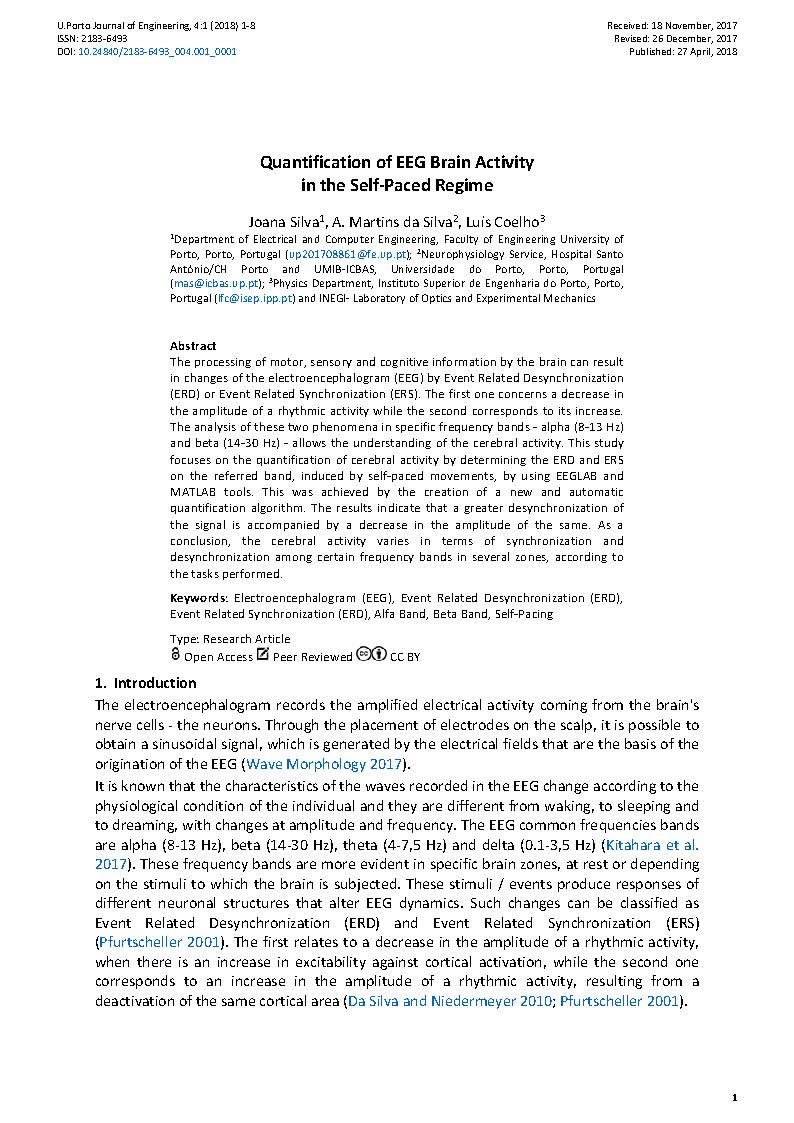Quantification of EEG Brain Activity in the Self-Paced Regime
Main Article Content
Abstract
The processing of motor, sensory and cognitive information by the brain can result in changes of the electroencephalogram (EEG) by Event Related Desynchronization (ERD) or Event Related Synchronization (ERS). The first one concerns a decrease in the amplitude of a rhythmic activity while the second corresponds to its increase. The analysis of these two phenomena in specific frequency bands - alpha (8-13 Hz) and beta (14-30 Hz) - allows the understanding of the cerebral activity. This study focuses on the quantification of cerebral activity by determining the ERD and ERS on the referred band, induced by self-paced movements, by using EEGLAB and MATLAB tools. This was achieved by the creation of a new and automatic quantification algorithm. The results indicate that a greater desynchronization of the signal is accompanied by a decrease in the amplitude of the same. As a conclusion, the cerebral activity varies in terms of synchronization and desynchronization among certain frequency bands in several zones, according to the tasks performed.
Downloads
Article Details
Authors who publish with this journal agree to the following terms:
- Authors retain copyright and grant the journal right of first publication with the work simultaneously licensed under a Creative Commons Attribution License that allows others to share the work with an acknowledgement of the work's authorship and initial publication in this journal.
- Authors grant the journal the rights to provide the article in all forms and media so the article can be used on the latest technology even after publication and ensure its long-term preservation.
- Authors are able to enter into separate, additional contractual arrangements for the non-exclusive distribution of the journal's published version of the work (e.g., post it to an institutional repository or publish it in a book), with an acknowledgement of its initial publication in this journal.
- Authors are permitted and encouraged to post their work online (e.g., in institutional repositories or on their website) prior to and during the submission process, as it can lead to productive exchanges, as well as earlier and greater citation of published work (See The Effect of Open Access).

